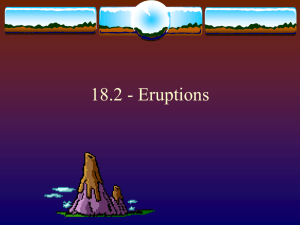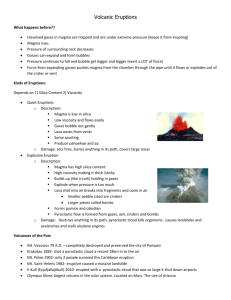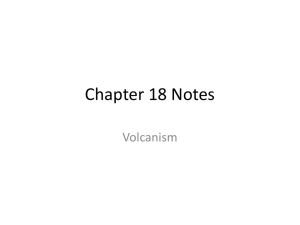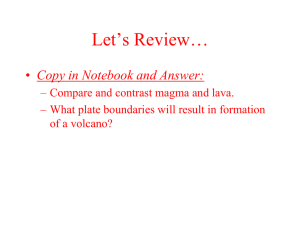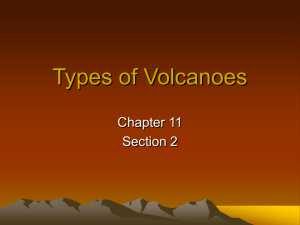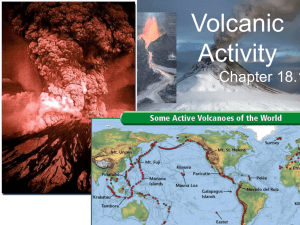18.2 volcanoes power point
advertisement
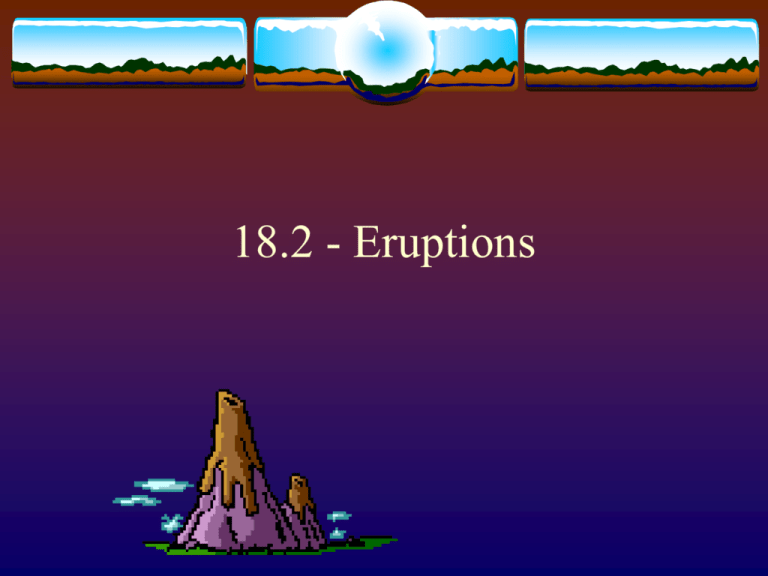
18.2 - Eruptions Making Magma Activity depends on composition of magma Lava can be thin & runny or thick & lumpy Magma Temperature Most rocks melt between 800-1200 °C In Crust & Upper Mantle Pressure Increase with depth because of weight of rocks High pressure increases melting temperature Composition of Magma Amount of Gas & Silica Increase gas dissolved = increased explosiveness Dissolved gases = carbon dioxide, water vapor, sulfur oxide, sulfuric acid Water vapor determines where magma forms Water vapor decreases melting temperature Composition Viscosity = Resistance to flow Temperature & silica content affect viscosity High viscosity = cool magma High silica = thick & sticky Traps Low gases, produces explosive eruptions silica = thin & runny Flow easily, produce quiet, non-explosive eruptions Types of Magma - Basaltic Less then 50% silica content Low-viscosity magma Gas easily escapes Quiet eruptions Ex: Kilauea & Mauna Loa http://media-2.web.britannica.com/eb-media/31/20231-004-008EFA7E.jpg Types of Magma - Andesitic 50-60% silica content Oceanic-continental subduction zones Intermediate viscosity Intermediate explosiveness Send high volumes of ash & debris Ex: Colima Volcano in Mexico http://images.livescience.com/images/050531_colima_volcano_04.jpg Types of Magma - Rhyolitic More than 60% silica content Magma mixes with water and silica High viscosity Large volumes of gas trapped Very explosive Explosive Eruptions If lava is too viscous to flow, pressure builds up until an explosion Tephra = pieces of solidified lava or pieces of crust Classified by size Ash = smallest tephra, diameter is less then 2 mm Blocks = largest tephra Ash Can rise into atmosphere Tiny sulfuric acid droplets remain in stratosphere and block sun’s rays and decrease global temperature http://geology.com/articles/volcanic-ash/volcanic-ash-column.jpg Pyroclastic Flows Tephra + gases VERY HOT http://vulcan.wr.usgs.gov/Imgs/Jpg/MSH/Images/MSH80_pyroclastic_flow_from_st_helens_crater_08-07-80.jpg In-Class Assignment 18.2 Study Guide WKT
